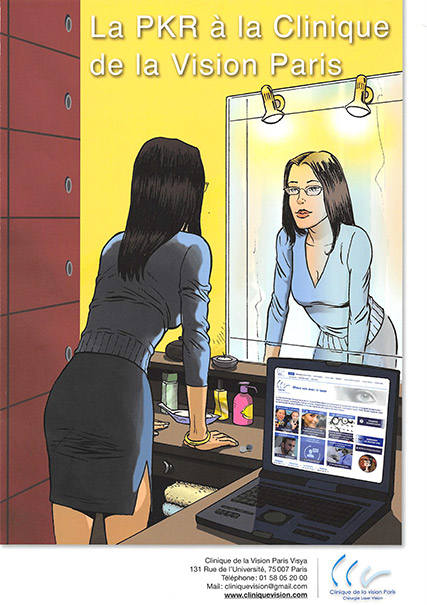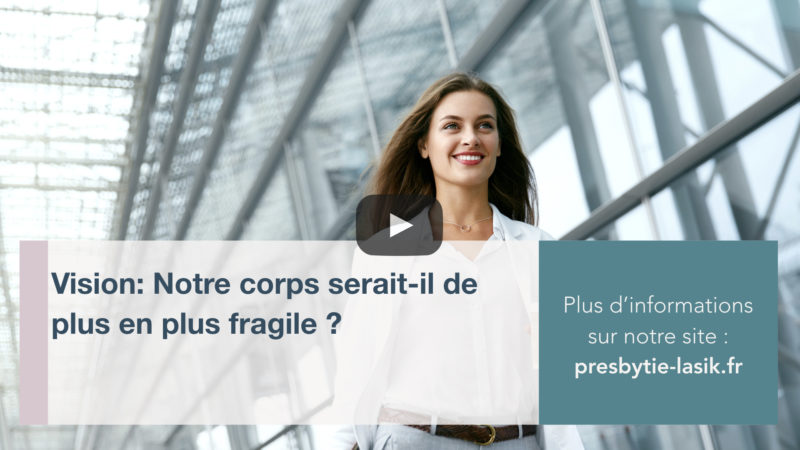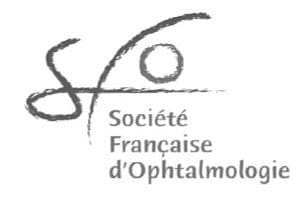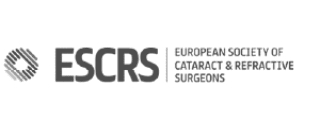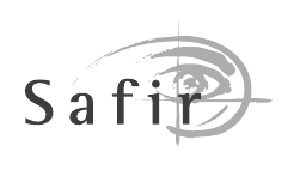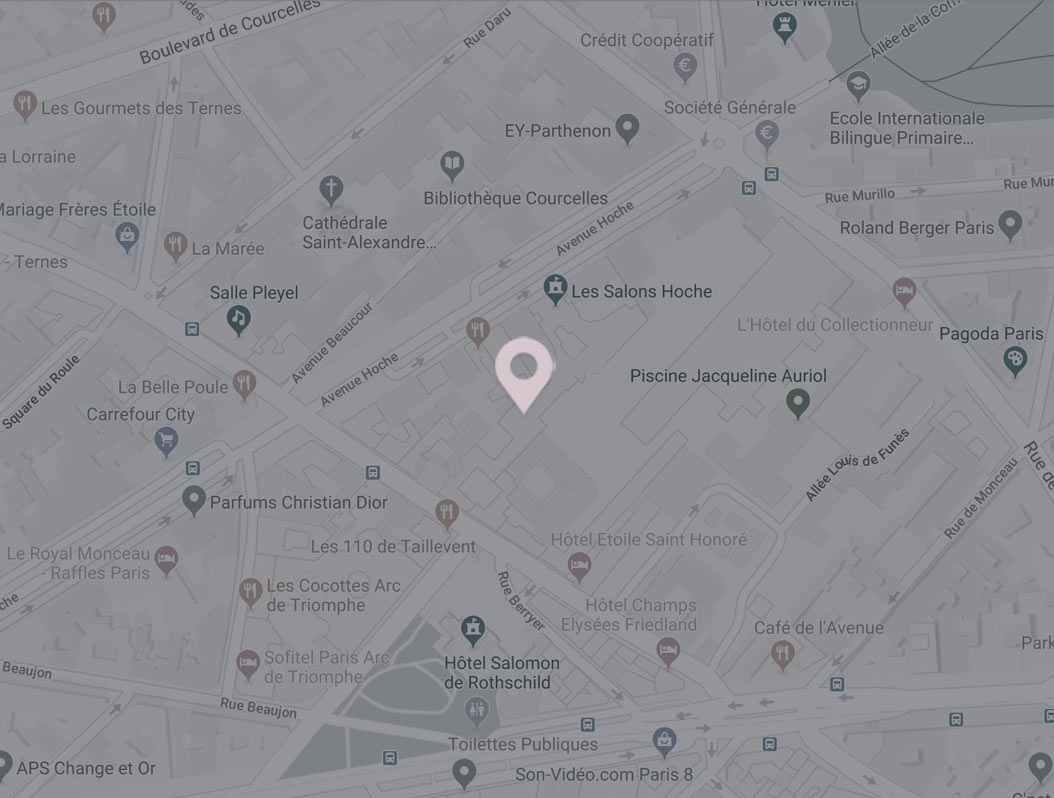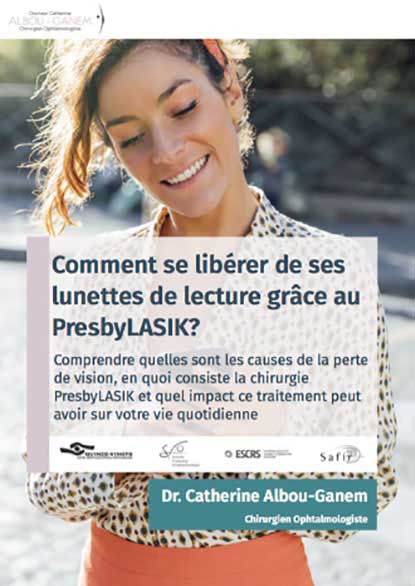ReLEx SMILE
The most advanced and less invasive form of LASIK – Keyhole LASIK
Summary of ReLEx SMILE
- The cornea is the transparent porthole in front of the eye
- Its thickness varies between 450 and 600 microns
- The more the cornea is “curved”, the higher its dioptric power is necessary and vice versa
- As a result, increased curvature of the cornea corrects hypermetropia and flattening of the cornea corrects myopia
- It is from these principles that, in the sixties, José Barraquer theorized and developed corneal refractive surgery from which modern ophthalmologists derived SMILE
- The term SMILE is the abbreviation of “Small Incision Lenticule Extraction”
- Ophthalmologists have practised SMILE since 2008
- SMILE can correct short-sightedness and astigmatism
- SMILE is a virtually painless procedure performed under anaesthesia by simple instillation of eye drops
- The typical visual recovery after SMILE is 24 hours
SMILE – An introduction
SMILE (Small Incision Lenticule Extraction) allows for myopic refractive correction without Excimer, using only the Femtosecond VisuMax® laser. SMILE consists in creating a femtosecond laser refractive lenticule with a thick and variable design according to ametropia to correct. We then cleave the lenticule and detach it from the anterior and posterior stroma plane and remove it through a small incision.
Procedure of the surgery:
The SMILE procedure is quick; it takes less than half an hour for both eyes. We instill anaesthetic eye drops on the area of the eye we treat. SMILE is painless. It is not necessary to come on an empty stomach for this type of anesthesia and intervention.
What conditions does SMILE address?
With SMILE we can correct:
- Myopia from -1 to -10 or 12 dioptres according to the central thickness of the cornea
- Astigmatism up to 5 dioptres whether the patients are presbyopic or not
SMILE does not yet allow the correction of hyperopia and isolated presbyopia.
How do you know SMILE is right for you?
SMILE is a type of refractive surgery. Refractive surgery is for all ametropic patients (short-sighted, long-sighted, and astigmatic) whose vision is well corrected by glasses or contact lenses but who wish to see clearly without optical accessories.
Refractive surgery (the type of surgery SMILE is) is an optional surgery of convenience. It is only for informed and motivated patients. The decision to have SMILE is personal, and the motivations include comfort, sport, aesthetic or professional. Patients may benefit from SMILE provided that there are no contraindications that are the same as those of LASIK.
ReLEx SMILE – Further details
The operation takes place in 2 steps:
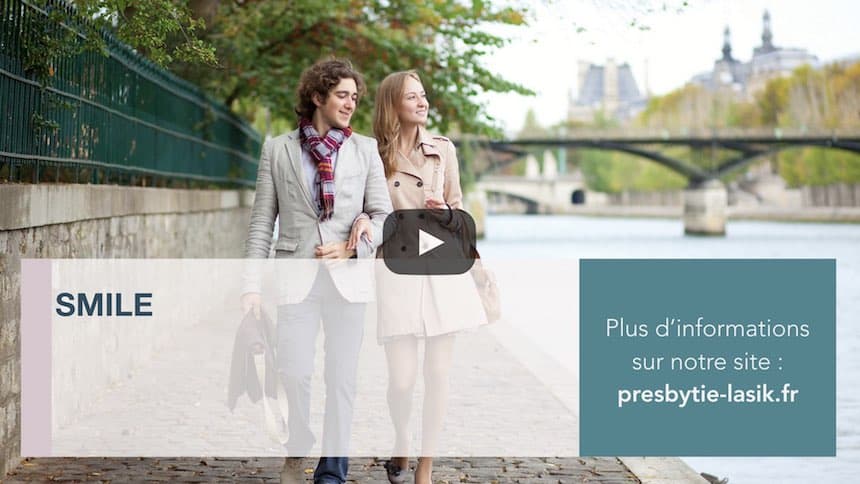
Step 1: Creating of the lenticule with the Femtosecond laser
The procedure is as follows: we place a device composed of an applanation cone coupled to a suction ring connected to the femtosecond laser on your cornea.
Creating the lenticule takes 23 seconds. We program the parameters (like diameter, thickness, position and size of the incision) according to the ametropia we aim to correct.
Step 2: Removal of the lenticule
The second step is refractive and corresponds to the surgical removal of the lens through the incision.
Patient experiences after SMILE
Once the procedure is over, you’ll have blurry vision for a few hours, but you can move without difficulty. You’ll be able to blink regularly, You will not need protective eye goggles (as in LASIK) or a bandage contact lens (as in PRK).
Your stay in the clinic will not exceed 1 hour. You can go home by private car or taxi, but you cannot drive because of the visual fog. It is better but not necessary to leave the clinic accompanied.
An ocular discomfort with the sensation of “sand in the eye”, accompanied by a more or less abundant tearing and dazzling in the light, appears one hour after the procedure.
Visual Recovery
Surgery for myopia and astigmatism with SMILE is accurate, effective and safe. After the surgery, 98% of patients can lead a fully spectacle-free life after the procedure. Postoperative vision is usually comparable to preoperative corrected vision with glasses or contact lenses.
The degree of satisfaction of the operated patients is close to 100%. Naturally, your happiness will depend on the quality of the surgical procedure and the expertise of the surgeon. Vision recovery requires 12 to 24 hours which allows you to resume your normal activities the day after the procedure.
Screen work does not pose a particular problem, and you are free to engage in it. After the procedure, your vision will be different, and it takes a few weeks to stabilise. During this period your near vision can be temporarily disturbed.
Postoperative precautions
- Do not rub your eyes
- In case of tearing, which can be frequent in the immediate postoperative period, wipe your eye with a clean compress, without touching the eye
- Begin eye drops on the day of the procedure according to the prescription we give you and for the duration and the dosages we prescribe
- Post-operatively, in case you experience eye pain, or even discomfort, immediately take a relaxing medication or analgesic. If, the symptoms reappear, consult with us quickly
- Do not make any important decisions while under the influence of a tranquillizer
- Showering and shampooing are possible the day after the surgery provided you take the necessary precautions not to rub your eyes
- You can resume work and all activities the day after the operation. You can resume swimming after 8 days
- Do not forget to attend aftercare appointments
- The final definitive glass to prescribe on your eyeglass frames will be only after a few weeks
- Remember to change the details of the driving license
- Tell your treating ophthalmologist that you have had surgery
- Get monitored annually by an ophthalmologist
- This sensation lasts about three days, and many patients feel it most in the first 24 hours. During this period, it is best to close your eyes and avoid too much light
- You can resume work the next day
- Work stoppages are not possible for this surgery because the government considers it a comfort surgery not supported by Social Security
- A postoperative consultation is necessary for the days following the surgery
FAQs about ReLEx SMILE ™ LASIK
TÉMOIGNAGES

“Le jour de l’intervention, je n’ai ressenti aucune gêne et aucune douleur. Après 2 h de repos j’ai pu reprendre mes activités tout à fait normalement. Deux jour après l’intervention il ne subsiste aucune gêne. Je tenais également à insister sur le fait que, contrairement aux idées reçues, ce n’est pas une intervention réservée aux personnes jeunes. J’ai 59 ans et c’est une totale réussite.”

“Le Docteur Albou-Ganem m’a opérée de la presbytie il y a un an, et je suis très heureuse du résultat, plus besoin de lunettes pour lire, même ma vue de loin est bonne. C’est un vrai soulagement pour moi, car j’ai hésité pendant un moment avant de sauter le pas, difficile de prendre une telle décision.”

“Après une opération rapide et sans douleur j’ai quasiment immédiatement remarqué une nette amélioration de ma vue de près et de loin. Au fil des semaines cela n’a fait que se confirmer et je n’ai jamais reporté mes lunettes depuis! Je ressens une telle liberté dans ma vie de tous les jours ainsi qu’une impression d’avoir rajeuni que je recommande à toute personne de le faire sans hésitation si cela leur est possible!”

“Docteur Catherine Albou-Ganem l’a immédiatement dissipée. Contact et confiance se sont installés immédiatement. Ses explications ont été claires, précises et je peux dire que le Jour J de l’opération, j’y suis allé les yeux fermés! Pour les rouvrir quelques heures plus tard avec la vue parfaite d’un homme de 30 ans!”

“L’opération a été un franc succès. J’ai maintenant 10/10e, sachant qu’auparavant j’avais une assez forte myopie (-5 et et -4,5) et un léger astigmatisme.”

“Vous m’avez opérée il y a maintenant plus de deux ans. A part pour conduire et regarder la télévision, et encore… je n’ai plus besoin de lunettes, moi qui n’ai jamais rien vu… Il m’a fallu plusieurs mois pour que ma vue s’adapte. Je tenais donc à vous remercier de cette opération qui a changé ma vie! Plus d’ulcères douloureux dus aux lentilles et la possibilité d’ouvrir les yeux sous l’eau et d’admirer les jolis poissons!”
We have replaced the images of real patients who provided these testimonials to protect their privacy.
 Skip to content
Skip to content


